One minute Paul McLoughlin was standing at his till . The next, he was lying in a pool of blood, having received several blows to the head with the butt of a gun, his hard-earned takings gone.
The Londis shop owner was lucky to escape with his life. "I grabbed his arm to try to get the gun," recalls McLoughlin of the incident last month. "It wasn't bravery, it was just instinct. I didn't stop to consider just how dangerous the situation was."
McLoughlin's ordeal shows it is not just stores in urban or deprived areas that are being affected - his store is located in the village of Wheatley in Oxfordshire. It also highlights the growing level of violence shop staff are having contend with.
Since the economic downturn kicked in the number of violent crimes has risen sharply. In a recent survey, Association of Convenience Store members reported that robberies in the final quarter of 2008 were up 23% on the previous quarter, while violent incidents were up 22% year-on-year. Home Office figures from 2008, meanwhile, show an 10% increase in the number of armed robberies that take place in shops, the most targeted commercial premises.
"Violence is a worrying growing trend," says ACS public affairs director Shane Brennan. "There are two key drivers. One is theft, the other is underage sales and refusing to sell things to people who haven't got ID, which leads to abuse."
Like many of the other stores subjected to robbery, theft, or violence, McLoughlin's Londis is a c-store - top of the list of those affected by retail crime, ahead of supermarkets (see box).
It is no surprise that smaller community retailers - with their minimal security and isolated locations - are particularly vulnerable, says Jane Milne, the British Retail Consortium's director of business environment. "There are more small crimes, such as thefts, from town centre stores ," she says. "But there are more robberies at community shops, presumably because it's relatively easy to access them."
The growing violence involved is something Shumaila and Aamir Malik, who have run their Manchester-based Costcutter store for 14 years, are all too familiar with. They have suffered racial abuse and several robberies, the most recent of which left Aamir seriously injured. "When my husband was attacked last year, I did want to give up," admits Shumaila, who is north west president of the National Federation of Retail Newsagents.
"The two masked men were armed with a baseball bat and a pole. They demanded money but didn't give him a chance to open the till. I think it was the time aspect: they want a 'quick in, quick out', and they don't want retaliation."
Whereas the Londis robber was caught thanks to a photo-fit, the Maliks' attackers have never been brought to justice. The couple pay £600 a year for a police-linked panic button under their till and have installed CCTV. "But it's no deterrent," says Shumaila, who is lobbying for subsidies for police-supported technologies such as forensic trace sprays .
Armed robberies are not just on the increase, incidents of shoplifting are also being accompanied by a greater degree of violence. "The more desperate people get, the more volatile they are. We're finding more and more weapons on shoplifters after they've been caught ," says a department manager for the East Midlands store of a leading supermarket chain.
Retailers have responded by increasing security staff, tagging more high-value products and investing in technology. Over the past two years, staff working for Spar retailer AF Blakemore have benefited from personal attack alarms, panic alarms, as well as monitored CCTV and audio systems that enable the security station to talk directly to perpetrators.
"Since the measures were put in place, we've had letters and emails from staff saying how much safer they feel," says Mark Stevenson, loss prevention manager.
Others have introduced 'softer' measures. Asda has increased its front-of-store presence with greeters and kiosks . Waitrose works with local crime prevention officers and branches of The Co-op Group are inviting local police to take refreshment breaks in-store.
There's also growing demand for training that empowers staff . The traditional procedure for intercepting shoplifters - waiting until they cross the point of payment - can put staff in the firing line, argues Ian Kirke, a former police inspector, whose company Training For Success delivers conflict-management courses.
"One of the easiest wins is customer service. Deploy staff closer to doors and if they see something odd, get them to ask questions such as 'Good morning, would you like a basket?' The underlying message is, 'I've seen you'." One supermarket chain reported an 80% fall in incidents of public disorder following TFS's training.
Any measures that succeed in deterring crime before it escalates into violence are a step in the right direction, but there is still plenty more to be done, say trade groups.
The ACS is pressing the Home Office for measures including tougher sentencing and better use of fines. "We need to see proper intervention against shoplifters from the first offence," says Brennan.
The NFRN, meanwhile, is calling on the Government to take retail crime more seriously. "The Home Office needs to push resources into this area," says Parminder Singh, the NFRN's national deputy vice president, "because with the recession, we're going to need more measures in place."
Back at the Wheatley Londis store, McLoughlin says he has, since his ordeal, received victim support and counselling. Sadly, he won't be the only retailer on the front line needing help in the months ahead.
The Londis shop owner was lucky to escape with his life. "I grabbed his arm to try to get the gun," recalls McLoughlin of the incident last month. "It wasn't bravery, it was just instinct. I didn't stop to consider just how dangerous the situation was."
McLoughlin's ordeal shows it is not just stores in urban or deprived areas that are being affected - his store is located in the village of Wheatley in Oxfordshire. It also highlights the growing level of violence shop staff are having contend with.
Since the economic downturn kicked in the number of violent crimes has risen sharply. In a recent survey, Association of Convenience Store members reported that robberies in the final quarter of 2008 were up 23% on the previous quarter, while violent incidents were up 22% year-on-year. Home Office figures from 2008, meanwhile, show an 10% increase in the number of armed robberies that take place in shops, the most targeted commercial premises.
"Violence is a worrying growing trend," says ACS public affairs director Shane Brennan. "There are two key drivers. One is theft, the other is underage sales and refusing to sell things to people who haven't got ID, which leads to abuse."
Like many of the other stores subjected to robbery, theft, or violence, McLoughlin's Londis is a c-store - top of the list of those affected by retail crime, ahead of supermarkets (see box).
It is no surprise that smaller community retailers - with their minimal security and isolated locations - are particularly vulnerable, says Jane Milne, the British Retail Consortium's director of business environment. "There are more small crimes, such as thefts, from town centre stores ," she says. "But there are more robberies at community shops, presumably because it's relatively easy to access them."
The growing violence involved is something Shumaila and Aamir Malik, who have run their Manchester-based Costcutter store for 14 years, are all too familiar with. They have suffered racial abuse and several robberies, the most recent of which left Aamir seriously injured. "When my husband was attacked last year, I did want to give up," admits Shumaila, who is north west president of the National Federation of Retail Newsagents.
"The two masked men were armed with a baseball bat and a pole. They demanded money but didn't give him a chance to open the till. I think it was the time aspect: they want a 'quick in, quick out', and they don't want retaliation."
Whereas the Londis robber was caught thanks to a photo-fit, the Maliks' attackers have never been brought to justice. The couple pay £600 a year for a police-linked panic button under their till and have installed CCTV. "But it's no deterrent," says Shumaila, who is lobbying for subsidies for police-supported technologies such as forensic trace sprays .
Armed robberies are not just on the increase, incidents of shoplifting are also being accompanied by a greater degree of violence. "The more desperate people get, the more volatile they are. We're finding more and more weapons on shoplifters after they've been caught ," says a department manager for the East Midlands store of a leading supermarket chain.
Retailers have responded by increasing security staff, tagging more high-value products and investing in technology. Over the past two years, staff working for Spar retailer AF Blakemore have benefited from personal attack alarms, panic alarms, as well as monitored CCTV and audio systems that enable the security station to talk directly to perpetrators.
"Since the measures were put in place, we've had letters and emails from staff saying how much safer they feel," says Mark Stevenson, loss prevention manager.
Others have introduced 'softer' measures. Asda has increased its front-of-store presence with greeters and kiosks . Waitrose works with local crime prevention officers and branches of The Co-op Group are inviting local police to take refreshment breaks in-store.
There's also growing demand for training that empowers staff . The traditional procedure for intercepting shoplifters - waiting until they cross the point of payment - can put staff in the firing line, argues Ian Kirke, a former police inspector, whose company Training For Success delivers conflict-management courses.
"One of the easiest wins is customer service. Deploy staff closer to doors and if they see something odd, get them to ask questions such as 'Good morning, would you like a basket?' The underlying message is, 'I've seen you'." One supermarket chain reported an 80% fall in incidents of public disorder following TFS's training.
Any measures that succeed in deterring crime before it escalates into violence are a step in the right direction, but there is still plenty more to be done, say trade groups.
The ACS is pressing the Home Office for measures including tougher sentencing and better use of fines. "We need to see proper intervention against shoplifters from the first offence," says Brennan.
The NFRN, meanwhile, is calling on the Government to take retail crime more seriously. "The Home Office needs to push resources into this area," says Parminder Singh, the NFRN's national deputy vice president, "because with the recession, we're going to need more measures in place."
Back at the Wheatley Londis store, McLoughlin says he has, since his ordeal, received victim support and counselling. Sadly, he won't be the only retailer on the front line needing help in the months ahead.
The reality of retail crime
One in 10 shopworkers has been physically assaulted, while more than half have suffered verbal abuse [Usdaw survey 2008]
Retailers reported a 22% rise in physical violence and a 23% increase in robberies in the last quarter of 2008 [ACS survey]
Supermarkets and convenience stores account for 86% of robberies in the retail sector, with convenience stores and newsagents suffering the most attacks [BRC Crime Survey 2008]
The number of firearm robberies in shops increased by almost 10% year-on-year to 1,071 in 2008, making shops the most targeted commercial premises, ahead of banks and building societies [Home Office's Crime in England and Wales 2007-2008]
There is a theft from a shop every 90 seconds, costing the retail sector £1bn a year [BRC Crime Survey 2008]
Some 70% of BRC members surveyed felt their investment in crime prevention was ineffective
One in 10 shopworkers has been physically assaulted, while more than half have suffered verbal abuse [Usdaw survey 2008]
Retailers reported a 22% rise in physical violence and a 23% increase in robberies in the last quarter of 2008 [ACS survey]
Supermarkets and convenience stores account for 86% of robberies in the retail sector, with convenience stores and newsagents suffering the most attacks [BRC Crime Survey 2008]
The number of firearm robberies in shops increased by almost 10% year-on-year to 1,071 in 2008, making shops the most targeted commercial premises, ahead of banks and building societies [Home Office's Crime in England and Wales 2007-2008]
There is a theft from a shop every 90 seconds, costing the retail sector £1bn a year [BRC Crime Survey 2008]
Some 70% of BRC members surveyed felt their investment in crime prevention was ineffective







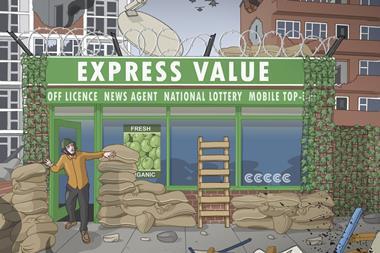
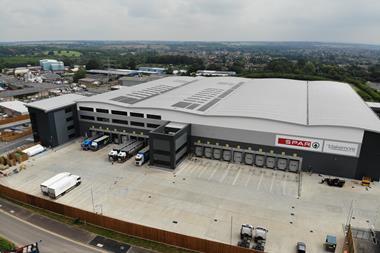
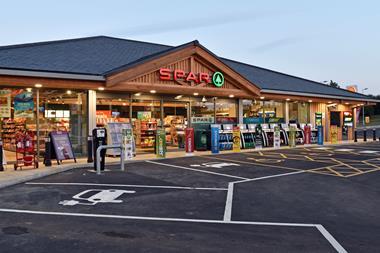
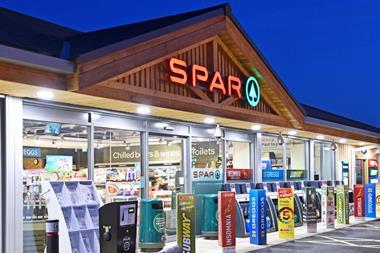
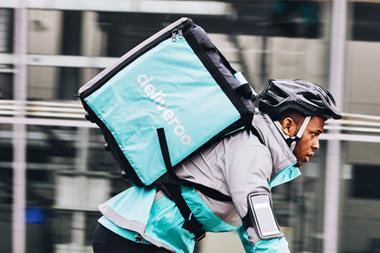
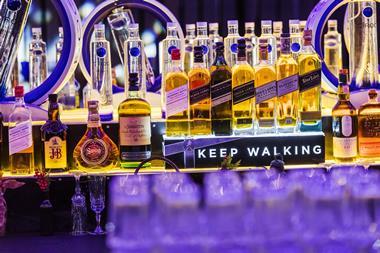




No comments yet